-
Chansoneta Tedescha- Anonymous composer (14th century Italian), performance by Scandicus Early Music Ensemble
YouTube Video
Click to view this content.
-
O primavera gioventu- Giaches de Wert (1535-1596), Strings and vocal performance by Concerto di Margherita

YouTube Video
Click to view this content.
> Giaches de Wert was a Franco-Flemish composer of the late Renaissance, active in Italy. Intimately connected with the progressive musical center of Ferrara, he was one of the leaders in developing the style of the late Renaissance madrigal. He was one of the most influential of late sixteenth-century madrigal composers, particularly on Claudio Monteverdi, and his later music was formative on the development of music of the early Baroque era.
-
Saltarello II (Anonymous, 15th century Italian)- 14 part ensemble recording by Egoriy Veshniy

YouTube Video
Click to view this content.
> The saltarello is a musical dance originally from Italy. The first mention of it is in Add MS 29987, a late-fourteenth- or early fifteenth-century manuscript of Tuscan origin, now in the British Library. It was usually played in a fast triple meter and is named for its peculiar leaping step, after the Italian verb saltare ("to jump"). This characteristic is also the basis of the German name Hoppertanz or Hupfertanz ("hopping dance"); other names include the French pas de Brabant and the Spanish alta or alta danza.
-
Hugh Ashton's Maske (composed 16th century)- recorder consort and percussion performance by Ensemble Feuervogel
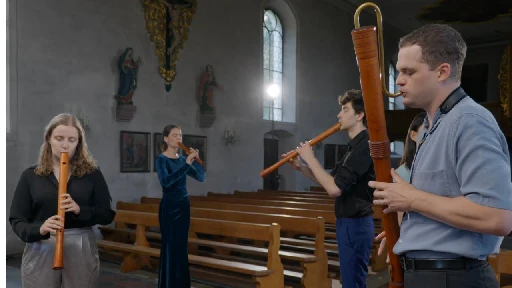
YouTube Video
Click to view this content.
> Hugh Aston (c. 1485 – buried 17 November 1558) was an English composer of the early Tudor period. While little of his music survives, he is notable for his innovative keyboard and church music writing. He was also politically active, a mayor, Member of Parliament, and Alderman.
-
Saltarello no. 4 (anon, 15th century Italian)- ensemble performance by Elthin
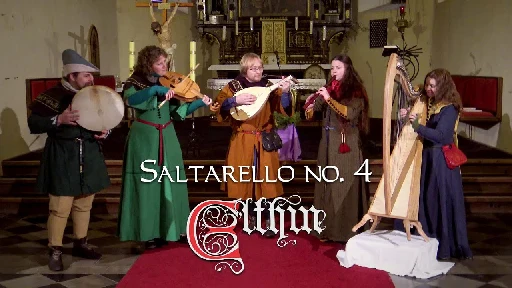
YouTube Video
Click to view this content.
> Add MS 29987 is a mediaeval Tuscan musical manuscript dating from the late fourteenth or early fifteenth century, held in the British Library in London. It contains a number of polyphonic Italian Trecento madrigals, ballate, sacred mass movements, and motets, and 15 untexted monophonic instrumental dances, which are among the earliest purely instrumental pieces in the Western musical tradition. The manuscript apparently belonged to the de' Medici family in the fifteenth century, and by 1670 was in the possession of Carlo di Tommaso Strozzi; it was in the British Museum from 1876, where it was catalogued as item 29987 of the Additional manuscripts series. It is now in the British Library.
-
Goddesses, John Playford (1651)- Ensemble performance by The Theater of Music

YouTube Video
Click to view this content.
> John Playford (1623–1686) was a London bookseller, publisher, minor composer and member of the Stationers' Company. He published books on music theory, instruction books for several instruments and psalters with tunes for singing in churches. He is perhaps best known today for his publication of The English Dancing Master in 1651.
Here's the music and dance instructions directly from the English Dancing Master:
-
Miserere mei, Deus (Gregorio Allegri, c. 1630s)- Tenebrae Choir performance conducted by Nigel Short

YouTube Video
Click to view this content.
> Miserere mei, Deus (Latin for "Have mercy on me, O God") is a setting of Psalm 51 by Italian composer Gregorio Allegri. It was composed during the reign of Pope Urban VIII, probably during the 1630s, for the exclusive use of the Sistine Chapel during the Tenebrae services of Holy Week, and its mystique was increased by unwritten performance traditions and ornamentation. It is written for two choirs, of five and four voices respectively, singing alternately and joining to sing the ending in one of the most recognised and enduring examples of polyphony, in this case in a 9-part rendition.
-
Ja Nus Hons Pris by Richard the Lionheart (c. 1192)- medieval gittern performance by Edward Foster

YouTube Video
Click to view this content.
> While in prison, Richard wrote the musical piece Ja nus hons pris or Ja nuls om pres ("No man who is imprisoned"), which is addressed to his half-sister Marie. He wrote the song, in French and Occitan versions, to express his feelings of abandonment by his people and his sister.
-
Mirie it is while sumer ilast (anon, 13th century)- ensemble performance by Vocantus

YouTube Video
Click to view this content.
> “Mirie it is while sumer ilast” (“Merry it is while summer ylast”) is a Middle English song of the first half of the 13th century. It is about the longing for summer in the face of the approaching cold weather. It is one of the oldest songs in the English language, and one of the few examples of non-liturgical music from medieval England. The manuscript was found together with two old French songs in a book of Psalms in the Bodleian Library. It was rediscovered at the end of the 19th century and made accessible to experts in 1901. It was arranged and published in a modern form for the first time by Frank Llewellyn Harrison.
-
Marc' Antonio Cavazzoni (ca. 1490-ca.1560) Recercada di mã ca in bologna- Renaissance Harpsichord performance by Catalina Vicens

YouTube Video
Click to view this content.
> All of [Cavazzoni's] extant music is contained in the print Recerchari, motetti, canzoni [...] libro primo, which was published in Venice in 1523. Included are the earliest known ricercars—they are not yet imitative, and are essentially written down improvisations, but there is a considerable amount of thematic development.
-
The Agincourt Carol (15th century folk composition)- vocalists, shawm, and kettledrum performance by the Historic Royal Palaces musicians at the Tower of London

YouTube Video
Click to view this content.
> The Agincourt Carol is an English folk song written some time in the early 15th century. It recounts the 1415 Battle of Agincourt, in which the English army led by Henry V of England defeated that of the French Charles VI in what is now the Pas-de-Calais region of France.
-
Saltarello (anon. Tuscan, c. 15th century)- Medieval recorder and tabor performance by Ensemble Pampinea

YouTube Video
Click to view this content.
> Add MS 29987 is a mediaeval Tuscan musical manuscript dating from the late fourteenth or early fifteenth century, held in the British Library in London. It contains a number of polyphonic Italian Trecento madrigals, ballate, sacred mass movements, and motets, and 15 untexted monophonic instrumental dances, which are among the earliest purely instrumental pieces in the Western musical tradition.
-
Fantasia X, Luys de Narváez (16th century)- Vihuela performance by Evangelina Mascardi

YouTube Video
Click to view this content.
She's one of the best string players I've heard. Outside the scope of this community, but check out her Bach lute suites, too; they're incredible.
-
Danse (Johannes de Grocheio, c. 1300) - medieval bagpipes performance by Raúl Lacilla
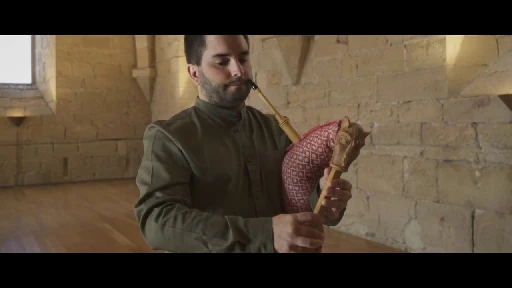
YouTube Video
Click to view this content.
> As we gather from 12th- and 13th-century depictions of bagpipes, the instruments from the period lacked the shoulder drones -a feature common to many present-day instruments- having in addition multiple-bore chanters (in my reconstruction a melodic pipe with a parallel drone). These chanters were probably activated by single reeds.
-
Tomás Luis de Victoria (1548-1611): O magnum mysterium- Viola da gamba consort performance by Voices of Music
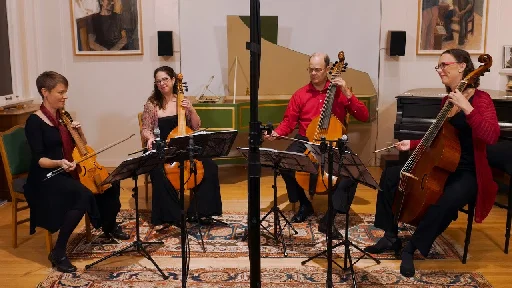
YouTube Video
Click to view this content.
-
Amanda Markwick demonstrates the Renaissance transverse flute
YouTube Video
Click to view this content.
-
Trotto (Anonymous, 15th century Italian dance)- Vielle performance by Jerome McGuinness

YouTube Video
Click to view this content.
-
Fantasia by Robert White (1538-1574)- Renaissance recorder consort performance by Ensemble Feuervogel
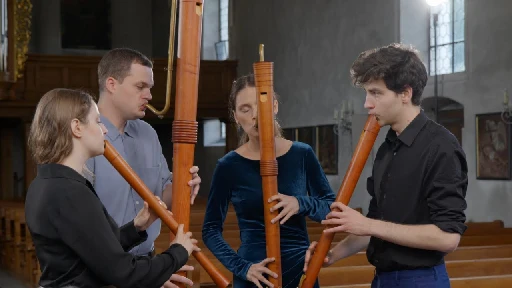
YouTube Video
Click to view this content.
-
IX. Canzon a 4 vo by Hans Leo Hassler (1564-1612)- Regal performance by Marcus Stahl
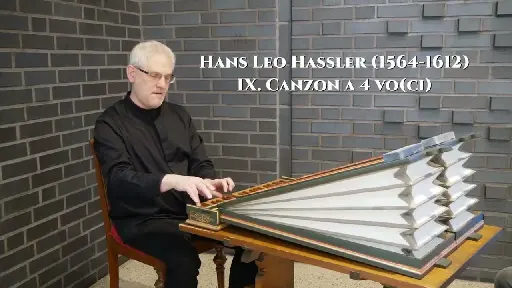
YouTube Video
Click to view this content.
The regal is a small portable organ, furnished with beating reeds and having two bellows. The instrument enjoyed its greatest popularity during the Renaissance. It may be seen as the ancestor of the harmonium, the reed organ, and the various varieties of "squeezebox" such as the accordion, the concertina, and the Bandoneón.
-
Ricercari (Francesco da Milano 1497-1543)- vihuela performance by Ariel Abramovich

YouTube Video
Click to view this content.
The vihuela is a 15th-century fretted plucked Spanish string instrument, shaped like a guitar but tuned like a lute. It was used in 15th- and 16th-century Spain as the equivalent of the lute in Italy and has a large resultant repertory. There were usually five or six doubled strings.
-
Madalena Casulana (16th century): "Vagh' amorosi augelli"- Arrangement and performance by Casulana Lute Consort

YouTube Video
Click to view this content.
Maddalena Casulana was an Italian composer, lutenist and singer of the late Renaissance. She is the first female composer to have had a whole book of her music printed and published in the history of western music, dedicated to her female patron Isabella de' Medici.
-
Dr Cornelia Kleinitz and Liam Williamson demonstrate the ancient rock gong

YouTube Video
Click to view this content.
-
Pastime with Good Company (written by Henry VIII, c. 1513)- Recorder and vocal performance by VIVID Consort

YouTube Video
Click to view this content.
-
Cantiga de Santa María #100 (Alfonso X collection from 13th century Iberia)- Hurdy gurdy performance by Emilio Villalba

YouTube Video
Click to view this content.
-
Sophie Matthews demonstrates the crumhorn with Michael Praetorius' (1571 - 1621) Gavotte from Terpsichore
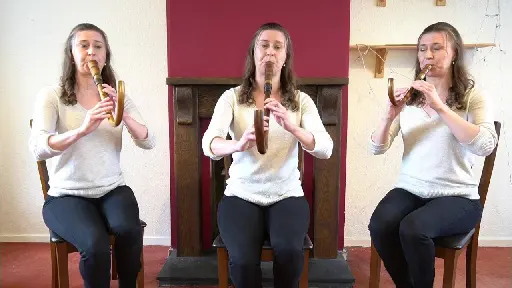
YouTube Video
Click to view this content.
-
Si jamais mon ame blessée by Pierre Guédron (1570-1620) - performance by Janelle Lucyk (vocals) and Kerry Bursey (theorbo)
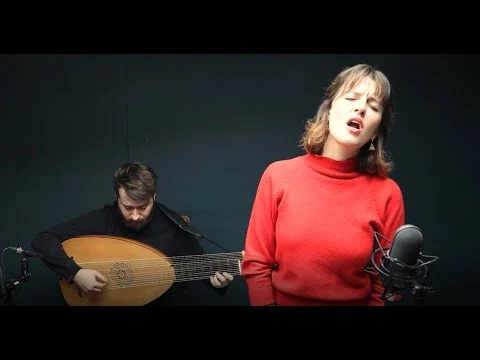
YouTube Video
Click to view this content.
-
Donato da Firenze's (14th century) I'o Perduto- Portative organ and recoder performance by Ensemble Pampinea
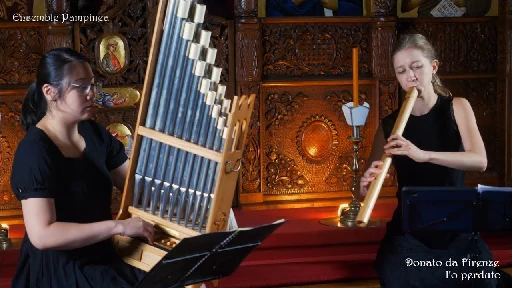
YouTube Video
Click to view this content.
-
Bobby Giglio demonstrates the Ancient Greek salpinx (trumpet)

YouTube Video
Click to view this content.
-
Woodycock (anon, c. 1580) - Renaissance guitar performance by Dmitry Cherevko
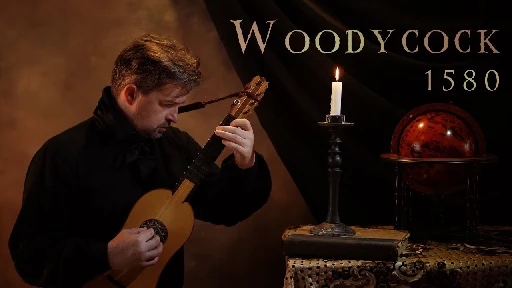
YouTube Video
Click to view this content.
-
Basse-danse "La Brosse" (Pierre Attaingnant, c. 1530)- Ensemble performance by Le Banquet du Roy

YouTube Video
Click to view this content.
-
Tenore del Kapsperger by Giovanni Girolamo Kapsperger (1580 - 1651)- Harp performance by Claire Piganiol

YouTube Video
Click to view this content.
-
Au Joly Bois (pub. 1529 by Claudin de Sermisy) - Performance by Emma-Lisa Roux, voice and Renaissance lute
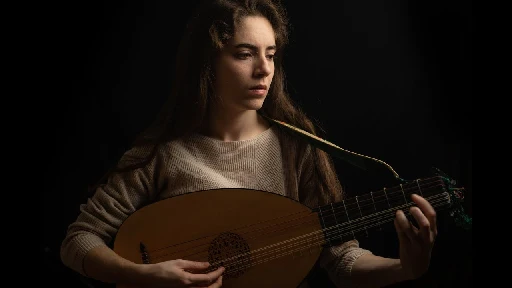
YouTube Video
Click to view this content.
-
William Byrd's (1540-1623) Fantasia a 4 No.1- Viola da gamba consort performance by Voices of Music

YouTube Video
Click to view this content.
-
A medley of John Playford songs (pub 1666)- Cittern performance by Dante Ferrara
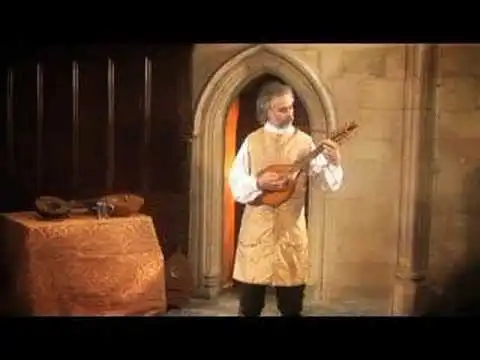
YouTube Video
Click to view this content.


